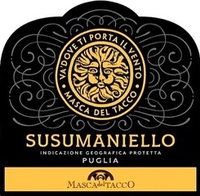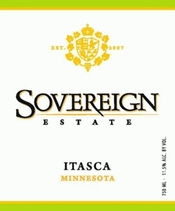Wine is a fascinating subject but can be frustrating and intimidating. It’s easy to find yourself awash in a bewildering array of information about grape types, soils, vintages, producers and on and on. Additionally, it is easy to find a few wine brands that you like and stick with those, just to avoid the welter of wine facts and attendant confusion that sets in when you venture beyond the familiar.
For the new year, however, you can resolve to try a new wine once a month, or week, or whatever time frame you prefer. To accomplish this, pick something that you are as unfamiliar with as possible. Perhaps a hitherto unknown grape variety, or a wine from a country or growing region you have not yet sampled. It pays, in an educational sense, to do some reading about your selection before you try it – just to get a sense of the important characteristics you might look for.
Here’s a few possibilities that, perhaps with a bit of searching, you can find in the US market. A Tannat from Uruguay could give you an introduction to both the grape  and the winegrowing nation. Greece offers wines like the aromatic white of Malagouzia or the delicate red from Limnio. Italian wine lovers need not leave that nation’s borders. You can seek out a Susumaniello from Puglia, a Marzemino from Trentino or possibly a Pelaverga or Nascetta from the Piedmont. Even within the US, you can expand your horizons with an Itasca from Minnesota or a Blanc du Bois from Texas.
and the winegrowing nation. Greece offers wines like the aromatic white of Malagouzia or the delicate red from Limnio. Italian wine lovers need not leave that nation’s borders. You can seek out a Susumaniello from Puglia, a Marzemino from Trentino or possibly a Pelaverga or Nascetta from the Piedmont. Even within the US, you can expand your horizons with an Itasca from Minnesota or a Blanc du Bois from Texas.
If you add one or two wines a month to your personal repertoire, you will have many new favorites by year’s end. That will make perusing  a restaurant wine list a more familiar experience but might complicate your decision-making process.
a restaurant wine list a more familiar experience but might complicate your decision-making process.
You can also resolve to get to know a grape variety more thoroughly. Pick a grape you like and try as many renditions of it as you can find. If you like Pinot Grigio from California, set out to try some from the Alto Adige and Friuli regions of Italy. Sample a Pinot Gris from Alsace and the Willamette Valley of Oregon and perhaps seek out an example from Germany (where it might be called Grauburgunder or Rülander) or Argentina or New Zealand. Similarly, Cabernet Sauvignon is grown in many quarters of the wine world. You could spend weeks sampling examples from the US, France, Italy, Australia, Chile and so on. Once your deep dive is completed, you will have a much better sense of your chosen grape and which styles of it you prefer.
Few ways of enhancing your wine education are more pleasurable than treating yourself to a bottle of wine that is significantly better than the sort of wine you are accustomed to. It is a simple, but true, axiom that good wine smells better and tastes better than mediocre wine and, while price is not the only determinant of quality, it generally holds true that the more you pay for a wine, the better it is likely to be. There are many exceptions to that general relationship, but that is a topic for another day.
It would be nice if we could all enjoy the very best of the world’s wines frequently. The sheer rarity of these wines, not to mention the formidable prices, precludes this practice, but you can find a reason to enjoy the unique sensual pleasures of an exceptional wine on occasion. There is a moment in the experience of nearly all wine enthusiasts when they discard fiscal responsibility and spend a substantial sum on a truly magnificent bottle – a wine that sets the standards by which others are measured. A great wine astounds and entices the visual, olfactory and taste senses, pleasing each in a way no other beverage can. If you have never given in to the reckless impulse to try a great wine, maybe this year is that time.
Once you have chosen to take that step, you must then decide which sort of wine thrills you the most – Bordeaux, Burgundy, California Chardonnay or Cabernet Sauvignon, red wine, white wine, sweet wine, sparkling wine – whatever. You may wish to share the experience (and expense) with like-minded souls. It is not necessary to seek out the single most expensive rendition of your chosen wine type. It is worthwhile, though, to take a giant step beyond your everyday beverage. For instance, if you routinely enjoy a $15-$20 wine, try sampling a $40-$50 bottle. If $30-$45 wines are your ordinary choice, look for a $75-$100 bottle to dazzle your senses. The threefold increase in price is a good rule of thumb for finding wines that increase significantly in quality. It may take some searching to find the ideal bottle for you, but with a little effort and perhaps some assistance from a knowledgeable sommelier or merchant, you can find a wine that will ring your personal sensory chimes.
This whole “treat yourself” effort is not a casual endeavor for most winelovers. Give a great wine a proper degree of respect. Know about the quality of the vintage, superiority of the producer, location of the vineyard, etc. None of this, of course, is necessary, but if you are spending a lot of dollars on a bottle, you might as well get the most for your money. If your special wine is paired with a meal, make the meal simple. Just as a virtuoso’s talents are most magnificently displayed in a solo performance, so too a great wine’s enticing characteristics are best appreciated without a riot of background flavors to distract the taste buds. Take some time with your enjoyment as well. Many fine wines are capable of remarkable development in the glass, and it is a sad moment when you realize that a wine is just reaching its best as you are taking the final sip.
While this ritual may sound pretentious and snobbish, I believe it is worth your while to contemplate all that was required in the transformation from grapes on the vine to the wine in your glass. A great deal of skill, knowledge, and good fortune is necessary to make an exemplary wine and a few thoughts of that nature may help you appreciate the rarity and special quality of the wine before you. Take a chance and treat yourself to the best. After all, who deserves it more than you? Be forewarned, though, once you develop a taste for better wines, you’ll probably want to indulge in them more often.
